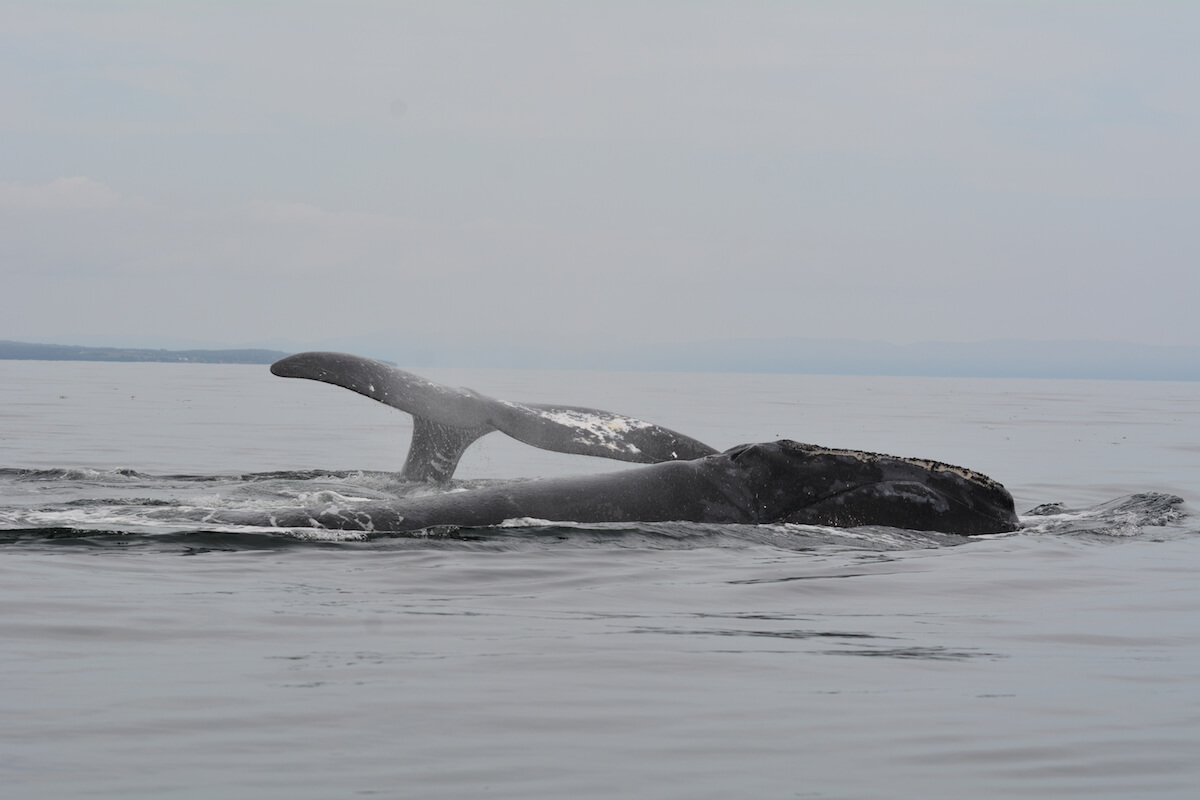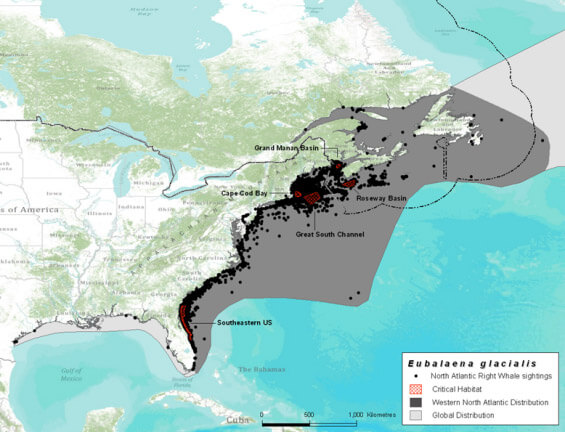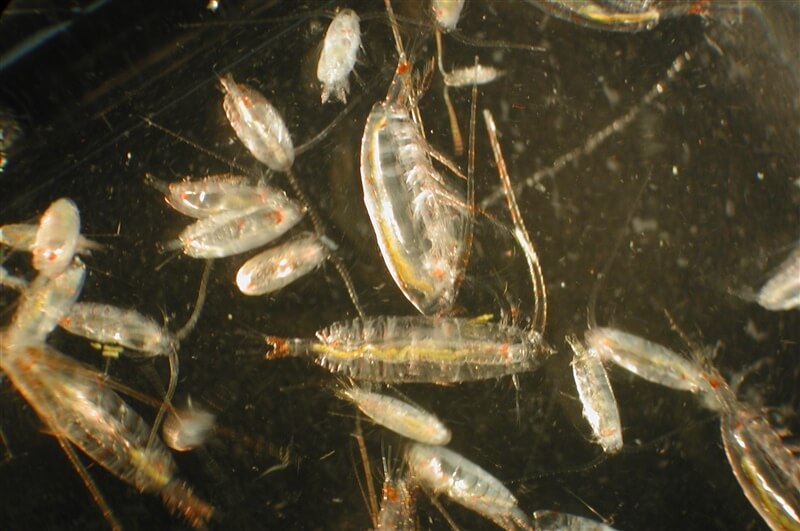Since 2015, an uptick in the presence of North Atlantic right whales has been observed in the Gulf of St. Lawrence. The alarm was sounded in 2017, when 17 carcasses were discovered in an unusual mortality event. Though historically absent from the region, this species has shifted its traditional range in recent years. This change is attributable to a variation in the availability of prey consumed by this cetacean. Why are right whales now visiting the Gulf of St. Lawrence? Researchers in the U.S. and Canada have begun to take an interest in this question.
The article published in Limnology and Oceanography discusses the shift in the North Atlantic right whale’s range. The oceanography of the Atlantic (especially in the northwest) is changing and is warming faster than other oceans. This has impacts on the availability of prey consumed by these giants of the seas.
Slightly more than 55,000 North Atlantic right whale sightings – from databases of the North Atlantic Right Whale Consortium, Fisheries and Oceans Canada, Transport Canada and the Mingan Island Cetacean Study (MICS) – have been made over the span of three decades, i.e. between 1990 and 2018.
Data on the abundance of zooplankton – the food that this species consumes – were also analyzed and correlated with observations in several regions. Data comparisons between decades have allowed researchers to draw two conclusions, namely that whales have begun to frequent the Gulf of St. Lawrence in spring, summer and fall, while at the same time increasingly shying away from the Gulf of Maine, the Bay of Fundy as well as the Scotian Shelf. How might we explain this change? The quantity of available prey has decreased significantly in these regions. Right whales have no choice but to take refuge in the Gulf of St. Lawrence. However, it is not that there is more food in the gulf than there was before, but rather that it is the “last restaurant open.”
Numerous concerns
The paucity of food available is having an impact on the reproductive rate of this endangered species. Indeed, pregnancy, calving and nursing are all very energy-intensive. Right whales are now increasingly encountered in unprotected waters. In particular, there are two natural whale reserves in the Scotian Shelf and Bay of Fundy region that were created in the early 1990s: the Grand Manan and Roseway basins. However, these protected areas are less and less frequented by right whales due to a lack of food.
In the Gulf of St. Lawrence, these whales are at greater risk of entanglement in fishing gear and ship strikes. A number of protection measures have been implemented in this region in response to the presence of this species, including speed limits for certain vessels as well as restricted areas for fishing or boating/shipping. However, implementing additional protective measures is challenging, as the animals’ distribution and their seasonal habitat use are changing. The study determined more precisely the sectors used by right whales since 2010, thus providing a basis for establishing new protected areas.
Since 2021, there has been an increase in the number of right whale births, which could indicate that the Gulf of St. Lawrence region is becoming suitable for this species, either because it has become accustomed to the region or because there is more food there. It is estimated that climate change could modify the range of copepods (e.g. Calanus finmarchicus) consumed by right whales, which may begin migrating poleward in the years to come. In order to adapt to climate change, North Atlantic right whales may begin to consume new prey such as other species of copepods (e.g. Calanus hyperboreus) that are abundant in the Gulf of St. Lawrence.
Traditional range in flux
The migratory route of North Atlantic right whales corresponds to the species’ movements between its breeding, calving, feeding and transit areas. Accompanied by juveniles and occasionally other individuals, females give birth in winter in the southeastern United States (near Florida). From the 1980s to 2010, these cetaceans returned to the Gulf of Maine every spring to feed. They then continued their migration, eventually reaching the Grand Manan and Roseway basins in the Scotian Shelf and Bay of Fundy region in summer and fall. Although they were sometimes observed outside these areas, their distribution has varied significantly since the 1990s, especially since the 2010s.
Close-up on North Atlantic right whale diet
Heterotrophic organisms (organisms that feed on organic substances) include zooplankton, which are divided into three large groups: crustaceans, rotifers and protozoa. Amongst crustaceans, there are water fleas (Cladocera) and copepods, which are found in all types of aquatic environments, from small ponds to oceans. Measuring between 0.5 and 3.5 mm, copepods feed on protozoa, small crustaceans, and occasionally larvae; others are herbivores.
North Atlantic right whales are baleen whales that feed extensively on copepods of the order Calanoida. The copepod Calanus finmarchicus is a prime prey for this species. Changes in the environmental conditions in which copepods live such as rising water temperatures and changing salinity in the Atlantic Ocean affect their ability to survive.








